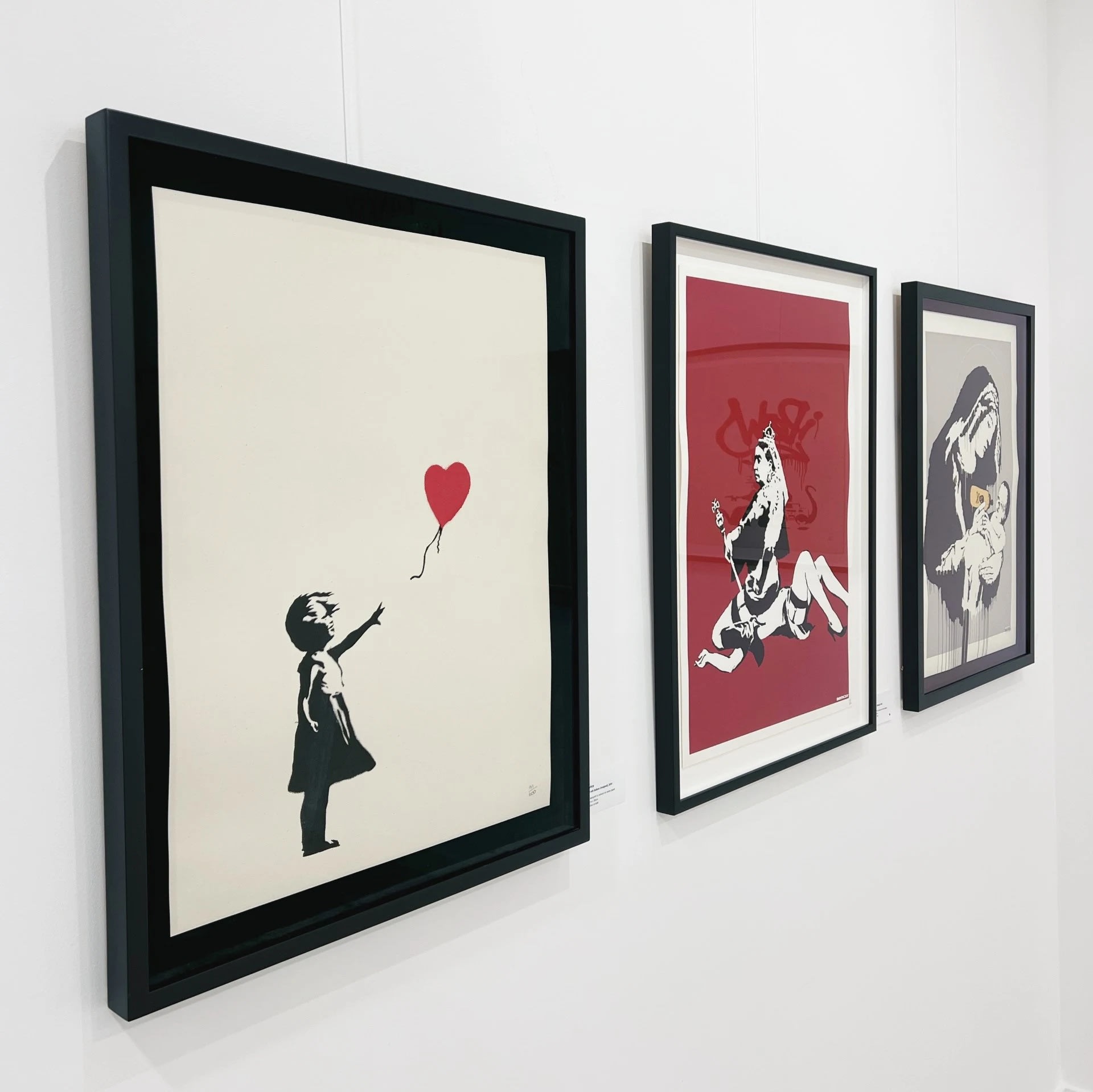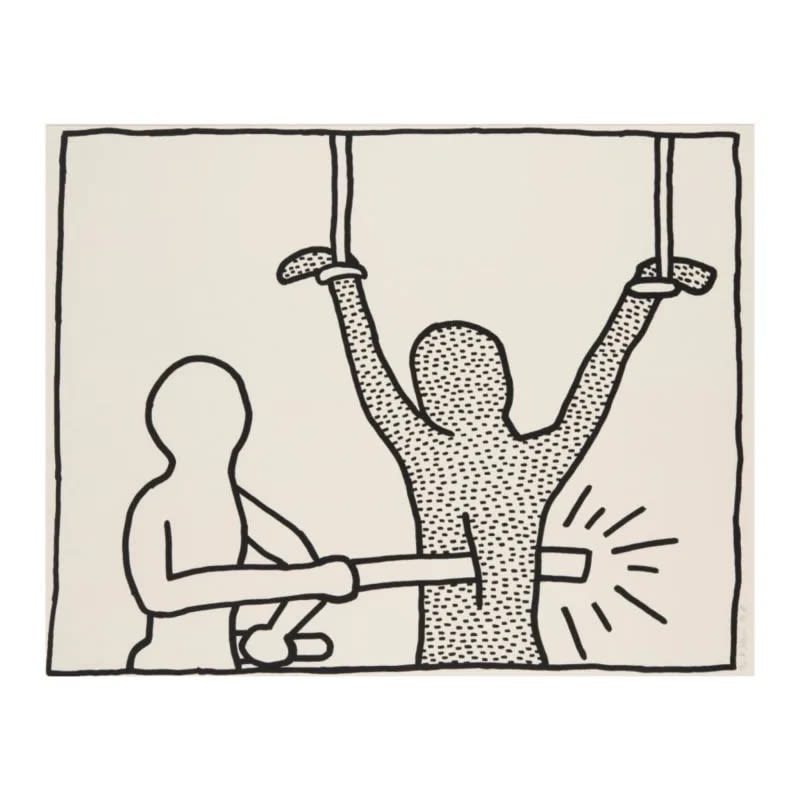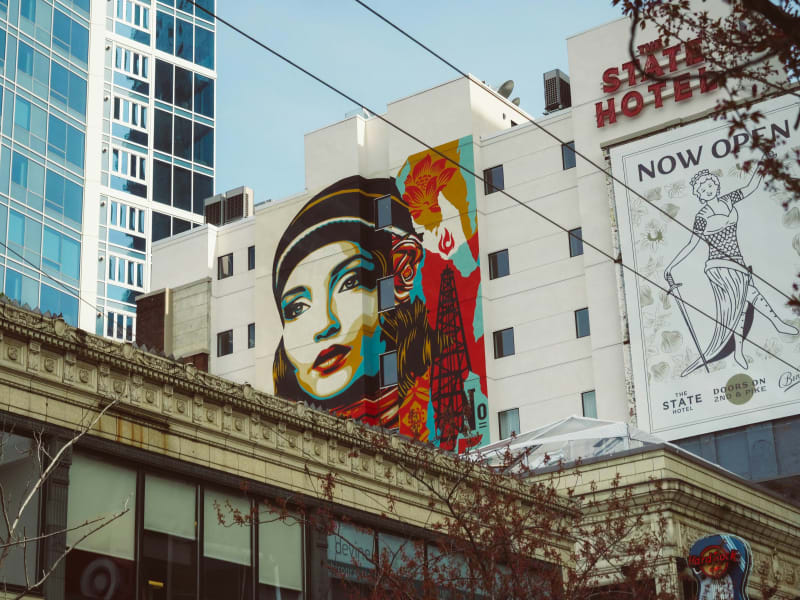The journey of urban art from illicit spray-painted tags to museum exhibitions and seven-figure auction sales represents one of contemporary art's most remarkable transformations. What began as an underground movement in 1970s New York has evolved into a blue-chip collecting category, with works by Banksy, Jean-Michel Basquiat, and KAWS commanding the attention of serious collectors worldwide. Understanding this evolution provides essential context for collectors seeking to acquire museum-quality urban art that combines cultural significance with investment potential.
The Underground Origins: 1970s New York
Urban art emerged from the subway tunnels and street corners of 1970s New York City, where young artists used spray paint to claim visibility in an indifferent urban landscape. Early practitioners like TAKI 183 and Phase 2 developed the visual language of graffiti, transforming public spaces into unauthorised galleries. The movement grew alongside hip-hop culture, with both art forms expressing the creative energy of marginalised communities seeking recognition.
This period established the foundational techniques that would later translate to gallery works. Artists developed spray paint mastery, creating complex layered compositions under time pressure. The stencil technique emerged as a method for rapid reproduction, while wheatpasting allowed for larger-scale interventions. These street-born methods would eventually inform the printmaking and edition work that makes urban art accessible to contemporary collectors.
The aesthetic vocabulary developed during this era, characterised by bold colours, graphic impact, and immediate visual communication, continues to define urban art's appeal. Works needed to arrest attention in fast-moving urban environments, resulting in the strong compositional clarity that translates exceptionally well to residential and commercial spaces.
The Gallery Transition: 1980s Legitimisation
The early 1980s marked urban art's first significant gallery recognition, with several pioneering artists bridging the gap between street practice and institutional acceptance. Jean-Michel Basquiat emerged from the SAMO graffiti collaboration to become one of contemporary art's most celebrated figures, with his neo-expressionist works now achieving record prices at auction. His 1982 debut at the Annina Nosei Gallery demonstrated that street-trained artists could command serious attention in the established art world.
Keith Haring similarly moved from unauthorised subway chalk drawings to gallery exhibitions and public commissions. His Pop Shop, opened in 1986, pioneered the concept of making artist-created merchandise and editions widely accessible, a model that influences how contemporary urban artists approach print releases. Haring's work demonstrated that bold graphic vocabulary developed on streets could translate to multiple formats while maintaining artistic integrity.
Gallery owners like Tony Shafrazi recognised the cultural momentum behind urban art, providing exhibition opportunities that validated the movement. These early shows established crucial precedents: urban artists could sustain gallery careers, collectors would pay substantial sums for their works, and the techniques developed on streets produced compelling gallery pieces.
European Evolution: Paris and London
While New York dominated early urban art development, European cities cultivated their own movements. Paris saw the emergence of Blek le Rat, who pioneered the stencil technique in 1981, creating the template that would later inform Banksy's practice. The stencil method allowed for precise reproduction and rapid deployment, making it ideal for creating editions that could reach broader audiences.
London's urban art scene developed its own character throughout the 1990s and early 2000s, with areas like Shoreditch becoming outdoor galleries. The city's tolerance for street art, combined with its established gallery infrastructure, created conditions for urban artists to develop dual practices that encompassed both street interventions and gallery exhibitions.
Invader brought a conceptual dimension to urban art, beginning his space invader mosaics in Paris in 1998. His systematic approach to documenting installations and creating limited-edition prints demonstrated how urban art could incorporate elements of conceptual practice while maintaining accessibility. The edition model he developed, with works carefully catalogued and authenticated, provided a framework other urban artists would adopt.

A view of the Banksy - Off the Wall exhibition at Calder Contemporary
The Banksy Effect: 2000s Market Transformation
No single artist has impacted urban art's market position more dramatically than Banksy. His combination of political commentary, dark humour, and striking visual imagery captured international attention, while his anonymity added mystique. The 2006 "Barely Legal" Los Angeles exhibition attracted major collectors and media coverage, signalling urban art's arrival as a serious collecting category.
Banksy's strategic use of editions and prints made his work accessible across price points. By releasing authenticated screenprints through galleries and Pictures on Walls, he created entry points for emerging collectors while maintaining separate markets for unique works. His establishment of Pest Control, an authentication service specifically for his work, addressed the forgery concerns that plague successful artists and provided collectors with confidence in their acquisitions.
The 2008 auction of "Keep It Spotless," a Banksy and Damien Hirst collaboration, achieved £1.8 million at Sotheby's, demonstrating that major auction houses recognised urban art's commercial potential. Subsequent record-breaking sales, including "Love is in the Bin" achieving £18.5 million in 2021, confirmed that urban art had achieved blue-chip status.
Banksy's career trajectory illustrated a crucial principle for collectors: urban artists who maintain consistent vision, develop authentication systems, and create accessible editions alongside unique works build sustainable markets. His example influenced how younger urban artists approach their careers and how galleries structure their urban art offerings.

Keith Haring Blueprint Drawings - One Plate for sale
Museum Validation and Institutional Recognition
Major museum exhibitions provided critical institutional validation for urban art. The Museum of Contemporary Art Los Angeles mounted "Art in the Streets" in 2011, the first major museum survey of graffiti and street art. The exhibition's success demonstrated significant public interest and confirmed that institutions recognised urban art's cultural importance.
The Brooklyn Museum's retrospectives of Jean-Michel Basquiat and Keith Haring further legitimised artists who began their careers on streets. These exhibitions applied art historical rigour to urban art practices, analysing technique, cultural context, and artistic development with the same seriousness applied to established modern masters.
European institutions followed suit. The Grand Palais in Paris hosted major installations, while Yorkshire Sculpture Park presented KAWS' monumental sculptures. These exhibitions positioned urban artists within broader contemporary art discourse rather than treating them as a separate category.
For collectors, museum recognition provides multiple benefits. It confirms artistic significance, generates scholarly attention that deepens understanding of the work, and typically strengthens market performance. Works by urban artists with substantial museum presence command premium prices and attract more serious collector interest.
The Contemporary Market: Investment and Accessibility
Today's urban art market operates across multiple price points, making it accessible to collectors at various levels. Limited-edition prints by established names typically range from £2,000 to £25,000, providing entry points for emerging collectors. Mid-range works, including artist proofs and smaller unique pieces, occupy the £25,000 to £100,000 bracket. Major unique works and significant editions command six-figure and occasionally seven-figure prices at auction.
This tiered market structure reflects urban art's democratic origins while acknowledging market realities. Artists who began their careers making work accessible to everyone now create across multiple formats, from affordable prints to museum-quality unique pieces. This approach allows collectors to enter at comfortable price points and potentially grow their collections as their resources and knowledge develop.
Authentication remains crucial in the urban art market. Reputable galleries provide certificates of authenticity, maintain relationships with artist studios or estates, and can document provenance. For Banksy works, Pest Control authentication is essential. Other artists maintain studio records or work with specific galleries for edition releases. Collectors should prioritise properly authenticated works from established sources.
The edition model that Keith Haring pioneered has become standard practice. Most established urban artists release limited-edition prints, carefully controlling edition sizes and maintaining quality standards. These editions make significant works accessible while preserving value through scarcity. Understanding edition structures, including the difference between numbered editions, artist proofs, and printer's proofs, helps collectors make informed decisions.
Cultural Impact Beyond the Market
Urban art's influence extends well beyond auction results and gallery sales. The movement democratised contemporary art, proving that artistic significance could emerge from outside traditional academy training. This shift opened doors for diverse voices and perspectives, enriching contemporary art's cultural conversation.
The aesthetic vocabulary developed by urban artists has influenced fashion, graphic design, advertising, and popular culture. Brands collaborate with urban artists, recognising their cultural relevance and ability to connect with younger audiences. These collaborations, while sometimes controversial within the art community, demonstrate urban art's mainstream cultural penetration.
For residential and commercial spaces, urban art offers immediate visual impact combined with cultural currency. A Banksy print or KAWS edition provides recognisable imagery that sparks conversation while demonstrating the owner's engagement with contemporary culture. The bold graphic clarity that made these works effective on streets translates exceptionally well to interior environments.

KAWS - Share artwork at Calder Contemporary
Collecting Considerations and Strategy
Collectors entering the urban art market benefit from understanding several key factors. Artist recognition and market presence matter significantly. Established names like Banksy, Jean-Michel Basquiat, Keith Haring, and KAWS have proven track records, substantial secondary markets, and strong collector demand. Emerging artists offer potential for appreciation but carry higher risk.
Edition size impacts value. Smaller editions (under 100 pieces) typically maintain stronger value than larger releases. Artist proofs, usually comprising 10 per cent of the edition, often command premiums. Understanding why an artist chose specific edition sizes provides insight into their market strategy and commitment to maintaining value.
Condition matters significantly for works on paper. Proper framing using museum-quality materials protects prints from light damage and environmental degradation. Works should be stored away from direct sunlight and humidity. For collectors viewing works as investments, maintaining pristine condition maximises future value.
Provenance and documentation strengthen any acquisition. Works purchased directly from reputable galleries or the artist's studio come with strongest provenance. Secondary market purchases should include documentation tracing ownership history. This paper trail becomes increasingly important as works appreciate and change hands.
The cultural narrative surrounding an artist influences long-term value. Banksy's political commentary and mysterious identity create ongoing media interest. KAWS' progression from street artist to global brand demonstrates sustained creative evolution. Invader’s systematic documentation of his installations provides conceptual depth. Understanding these narratives helps collectors assess which artists have staying power beyond temporary market enthusiasm.
Building a Cohesive Urban Art Collection
Collectors can approach urban art from multiple angles. Some focus on specific movements, acquiring works from the 1980s New York graffiti era through contemporary street art. Others concentrate on particular artists, building depth by acquiring multiple works that demonstrate creative evolution. Geographic focus provides another strategy, concentrating on works from specific cities or regional movements.
Thematic collecting offers compelling possibilities. Political commentary unites much urban art, from Banksy's satirical takes on capitalism and surveillance to activist imagery by various practitioners. Pop culture references connect artists like KAWS and Takashi Murakami, who reinterpret commercial imagery through fine art lenses.
Technical approach provides another organising principle. Collectors might focus on stencil-based works, gathering pieces by multiple stencil practitioners. Screenprints unite much urban art production, from Andy Warhol’s Pop Art precedents through contemporary urban artists who adopted the medium.
Successful collections balance established names with carefully selected emerging artists. Blue-chip works provide collection anchors and market stability. Thoughtfully chosen works by younger artists offer appreciation potential and demonstrate collector sophistication.
The Role of Specialist Galleries
Navigating the urban art market benefits significantly from specialist gallery relationships. Established galleries like Calder Contemporary provide authentication, market expertise, and access to quality works. They understand edition structures, can assess condition accurately, and maintain relationships with artist studios or estates that ensure proper documentation.
Reputable galleries offer transparent pricing, clearly communicating edition details, provenance, and condition. They provide certificates of authenticity and maintain records that strengthen future provenance. For collectors viewing works as investments, purchasing through established galleries protects value and provides recourse if questions arise.
Specialist galleries also offer market intelligence. They track auction results, understand demand patterns, and can advise on which artists show sustainable collector interest versus temporary market enthusiasm. This expertise proves particularly valuable for collectors building substantial positions in urban art.
Browse our curated selection of urban art to discover works by established masters and emerging talents. Our specialist team provides expert guidance on building collections that combine cultural significance with investment potential.
Looking Forward: Urban Art's Continuing Evolution
Urban art continues evolving as new generations of artists emerge. Digital tools expand creative possibilities, with some artists incorporating augmented reality elements into their street works. NFTs and digital editions present new distribution models, though physical works remain the market's foundation.
The movement's core principles persist: accessible visual language, cultural commentary, and democratic distribution through editions. These qualities ensure urban art's ongoing relevance for collectors seeking works that combine aesthetic impact with cultural engagement.
As urban art's first generation matures, historical perspective clarifies which artists and movements will maintain long-term significance. Jean-Michel Basquiat and Keith Haring have achieved permanent positions in art history. Banksy and KAWS appear headed for similar recognition. Understanding this trajectory helps collectors identify which contemporary artists show similar potential.
The transformation from street corners to gallery walls represents more than commercial success. It reflects urban art's genuine cultural contribution, its expansion of who can create meaningful contemporary art, and its demonstration that accessibility and artistic significance need not conflict. For collectors, urban art offers the opportunity to acquire museum-quality works by artists who fundamentally changed contemporary culture.
Whether starting a collection or expanding an existing one, urban art provides compelling opportunities across multiple price points. The combination of visual impact, cultural relevance, and market momentum makes it one of contemporary art's most dynamic collecting categories. With proper authentication, expert guidance, and thoughtful selection, collectors can acquire works that enhance their spaces while participating in one of art history's most significant movements.
Explore our collection of authenticated urban art or contact our specialist team to discuss building a collection tailored to your vision and investment goals.
